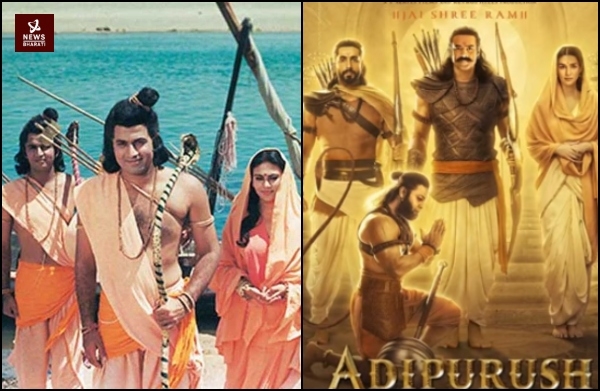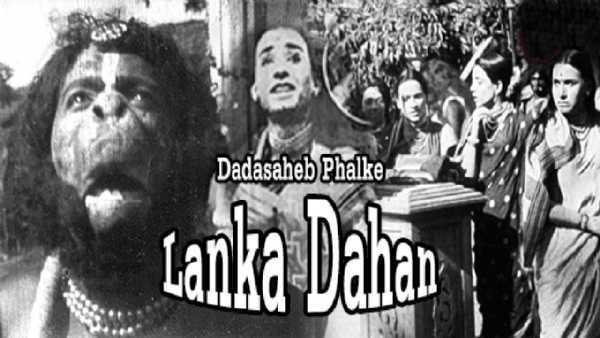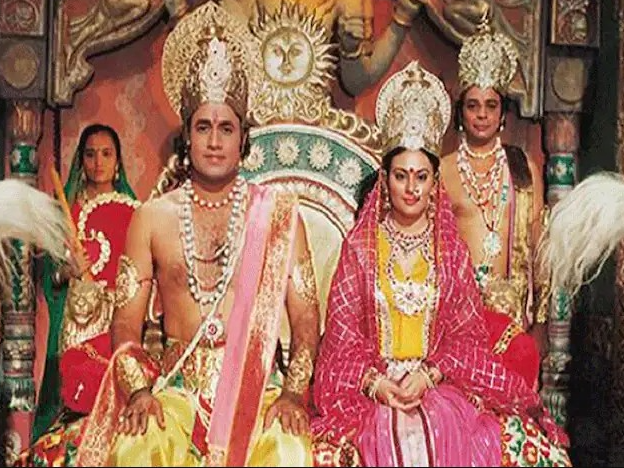From Sacred to Scandalized: Bhagwan Shri Ram's Journey in Bollywood's Cinematic Landscape
05 Jan 2024 22:00:11
I saw a post the other day on social media about how the anniversary of the season of Dalgona Coffees, trying online recipes, and watching Ramayan and Mahabharata is coming. Which made me think of the first time I ever watched Ramayan. It was the summer of 2020 when the world was on hold, and the Doordarshan channel made the 90s kids happy with the reruns of the shows. The show was simple, yet it created an impact through its story and writing and the casting.
And I wondered where the good old days of simple movies went when the VFX/ CGI wasn't that advanced, but they did the work just fine. When the costumes weren’t all stylish, they kept the essence of the characters. It also made me think of other movies based on Ramayan or Ram in popular culture.

The Early Years: Historical Epics on Screen
The first film based on Ramayan was Dadasaheb Phalke’s Lanka Dahan which came in the year 1917 and was based on an episode of Ramayan. The film was so hit making one exhibitor showcased it from morning till midnight. Those were the early days of Indian cinema, and directors drew extensively from Hindu religious epics, with the Ramayan being a favorite choice.
Over the years Bollywood has celebrated Ram and Trivialise him at the same time through the movies.

Bollywood's Ambivalence: Reverence Amidst Trivialization
The 1940s witnessed Urdu dominance and a shift towards critiquing Hindu societal norms. Notably, cult films like Awaara (1951) and Chhalia (1960) subtly pointed fingers at Bhagwan Shri Ram, portraying him as indirectly responsible for societal injustices, altering his character from revered to contentious. He was now the anti-hero.
The 1960s and beyond witnessed a transition from social dramas to masala films, marking a phase where mockery and trivialization of Bhagwan Shri Ram became normalized. Bollywood's iconic dialogues and scenes juxtaposed Ram's name with petty theft or even showed Ramlila as a source of comedic mishaps, sparking laughter at Ram's expense. Movies like Namak Halal have lead actors saying, “Ram naam japna paraya maal apna”, in the movie Muqaddar Ka Faisla Raj Babbar was seen looting a bank singing, “Ram naam ki loot hai loot sake to loot”.
Bollywood's ambivalent relationship with Bhagwan Shri Ram becomes more evident considering the immense popularity of the TV serial 'Ramayan’(1987) by Ramanand Sagar, where Actor Arun Govil, known for his portrayal of Ram became a revered figure, deeply associated with Bhagwan Shri Ram in the public imagination. Despite its success, contemporary films continued deviating from reverential depictions of Ram.
Contemporary Renditions: Exploring Complexity and Humanization
In the 21st century, Bollywood has explored Bhagwan Shri Ram's character with a more human touch, emphasizing his internal conflicts and emotional struggles but somehow managed to glorify Ravan, for instance- Films like Raavan (2010) portrayed Ravan as the hero, reinterpreting Ramayan through a different lens, gradually elevating Ravan's status while challenging Ram's portrayal.
While Bollywood was experimenting Japanese films like "Ramayana: The Legend of Prince Ram" (1992) experimented with animation and a mix of traditional and contemporary storytelling, reaching out to a younger audience.
This makes me wonder is Bollywood trying to be cool by going unconventional? Because...
In 2013, filmmaker Sanjay Leela Bhansali attempted to title his masala film Ram-Leela after naming the central romantic couple Ram and Leela. The film's commercial poster depicted Ram (Ranveer Singh) pushing down the blouse of Leela (Deepika Padukone) in mutual love. After Hindu organizations complained, the title was altered to Goliyon ki Rasleela Ram-Leela.
And this raises the question is the audience is too far invested in the story to relate it to the things that are far from the origin or the idea.

Challenges and Controversies: Balancing Tradition and Artistic License
We all know the recent controversy surrounding Adipurush, a film that aimed to retell the epic story, triggered significant public outrage due to perceived misrepresentations and creative liberties. The scrutiny faced by the film and subsequent adjustments in response to public disapproval highlighted the audience's growing sensitivity to depictions of revered figures.
This controversy reflects a larger sentiment of mistrust toward Bollywood's handling of Hindu scriptures and revered personalities. It has ignited discussions about the industry's selective creative liberties concerning Hinduism and the need for more respectful portrayals.
The Call for Responsible Storytelling
As Bollywood navigates this delicate territory, the challenge lies not just in cosmetic changes but in genuinely restoring public trust. The audience's heightened awareness, fueled by social media, demands authentic and sensitive representation of revered figures like Bhagwan Shri Ram.
The industry's evolution in portraying Ram reflects societal changes, from reverence to controversy, encapsulating Bollywood's complex relationship with mythology, societal norms, and audience reception. Balancing creative expression with cultural sensitivity remains an ongoing challenge, and the Adipurush episode underscores the need for nuanced storytelling that respects the sanctity of revered figures in Indian mythology.
Bollywood's journey in depicting Bhagwan Shri Ram reflects a broader societal conversation, signaling the need for responsible storytelling that resonates with diverse audiences while upholding cultural reverence.
--
